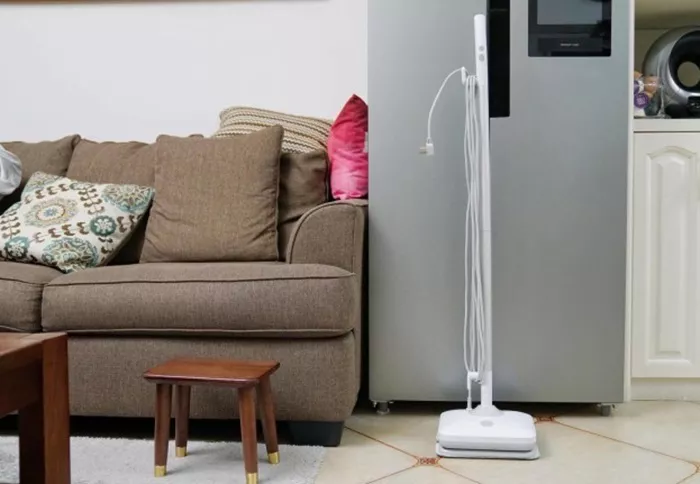Steam mops have become a popular cleaning tool in households and commercial spaces alike. They are often marketed as an effective way to clean and sanitize floors without the need for harsh chemicals. But how well do they actually sanitize surfaces? As a professional steam cleaner, I will provide a detailed, logical, and professional analysis of the sanitizing capabilities of steam mops. This article will cover the science behind steam cleaning, the types of surfaces it works best on, its limitations, and tips for maximizing its sanitizing potential.
1. The Science Behind Steam Cleaning and Sanitization
Steam mops use high-temperature steam to clean and sanitize surfaces. The steam is produced by heating water to temperatures typically ranging from 175°F to 212°F (80°C to 100°C). At these temperatures, steam can kill a wide range of bacteria, viruses, mold, and dust mites.
How Steam Sanitizes
Heat Kills Microorganisms: Most bacteria and viruses cannot survive at temperatures above 160°F (71°C). Steam mops exceed this threshold, making them effective at sanitizing surfaces.
Chemical-Free Cleaning: Steam cleaning relies on heat and moisture, eliminating the need for chemical disinfectants. This makes it an eco-friendly and allergy-friendly option.
Penetration Power: Steam can penetrate porous surfaces, reaching deep into cracks and crevices where dirt and microbes hide. This makes it more effective than traditional mopping.
Limitations of Steam Sanitization
While steam is highly effective, it is not a one-size-fits-all solution. Certain heat-resistant bacteria and spores, such as those from C. difficile, may require higher temperatures or longer exposure times to be eliminated. Additionally, steam mops may not be suitable for all surfaces, which we will discuss later.
2. Types of Surfaces Suitable for Steam Mop Sanitization
Not all surfaces can handle the heat and moisture produced by steam mops. Understanding which surfaces are suitable is crucial for effective sanitization and avoiding damage.
Ideal Surfaces for Steam Mops
Tile and Grout: Steam mops excel at cleaning and sanitizing tile floors. The steam can penetrate grout lines, removing dirt and killing mold and bacteria.
Hardwood Floors: Many modern steam mops are designed for use on sealed hardwood floors. The steam loosens dirt and sanitizes without leaving excess moisture that could warp the wood.
Laminate and Vinyl: These surfaces are generally safe for steam mops, but it’s important to avoid prolonged exposure to moisture to prevent damage.
Stone Floors: Steam can effectively clean and sanitize stone surfaces like granite or marble, but care must be taken to avoid etching or discoloration.
Surfaces to Avoid
Unsealed Wood: Steam can cause unsealed wood to warp or crack.
Delicate Surfaces: Surfaces like waxed floors or certain types of painted floors may be damaged by steam.
Carpet: While some steam mops have carpet attachments, excessive moisture can lead to mold growth in carpets.
3. Effectiveness Against Common Pathogens
One of the primary reasons people use steam mops is to sanitize their floors and reduce the risk of illness. Let’s examine how effective steam mops are against common pathogens.
Bacteria
E. coli and Salmonella: Steam mops can effectively kill these bacteria, which are common causes of foodborne illnesses.
Staphylococcus aureus: This bacteria, which can cause skin infections, is also susceptible to high-temperature steam.
Viruses
Influenza and Rhinovirus: Steam can deactivate these viruses, reducing the risk of colds and flu.
Norovirus: While steam can help reduce the presence of norovirus, it may not completely eliminate it due to its resilience.
Viruses
Influenza and Rhinovirus: Steam can deactivate these viruses, reducing the risk of colds and flu.
Norovirus: While steam can help reduce the presence of norovirus, it may not completely eliminate it due to its resilience.
4. Comparing Steam Mops to Traditional Cleaning Methods
To understand the sanitizing capabilities of steam mops, it’s important to compare them to traditional cleaning methods like chemical disinfectants and regular mopping.
Advantages of Steam Mops
Chemical-Free: Steam mops do not require harsh chemicals, making them safer for families, pets, and the environment.
Deep Cleaning: Steam can reach into pores and crevices, providing a deeper clean than traditional mopping.
Allergen Reduction: By killing dust mites and mold, steam mops can improve indoor air quality.
Disadvantages of Steam Mops
Moisture Concerns: Excessive moisture can damage certain surfaces and promote mold growth if not used correctly.
Time-Consuming: Steam mops may take longer to use than traditional mopping, as they require time to heat up and may need multiple passes.
Limited Disinfection: While steam is effective against many pathogens, it may not be as reliable as chemical disinfectants for certain resilient microbes.
5. Tips for Maximizing the Sanitizing Potential of Steam MopsPre-Cleaning
Remove Loose Dirt: Sweep or vacuum the floor before using the steam mop to prevent dirt from being pushed around.
Spot Clean Stains: Treat stubborn stains with a mild cleaner before steaming.
Proper Usage
Use Distilled Water: This prevents mineral buildup in the steam mop and ensures consistent steam production.
Maintain the Right Temperature: Ensure your steam mop reaches the recommended temperature for effective sanitization.
Avoid Over-Wetting: Use the steam mop in short bursts to avoid leaving excess moisture on the floor.
Maintenance
Clean the Mop Pad: Replace or wash the mop pad regularly to prevent cross-contamination.
Descale the Machine: If you notice reduced steam output, descale the machine to remove mineral deposits.
option.
7. Conclusion
From a professional perspective, steam mops are an excellent tool for sanitizing a wide range of surfaces. They are effective at killing bacteria, viruses, mold, and dust mites, and they offer a chemical-free cleaning solution. However, they are not without limitations. Proper usage, surface compatibility, and understanding their limitations are key to maximizing their sanitizing potential.
For most households, a steam mop is a worthwhile investment that can significantly improve cleanliness and reduce the risk of illness. However, in certain situations, it may be necessary to supplement steam cleaning with other methods to achieve the desired level of sanitization.By following the tips and guidelines outlined in this article, you can make the most of your steam mop and enjoy a cleaner, healthier living environment.
Related topics:

